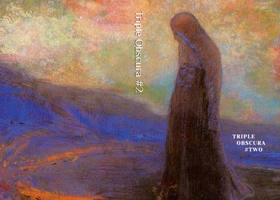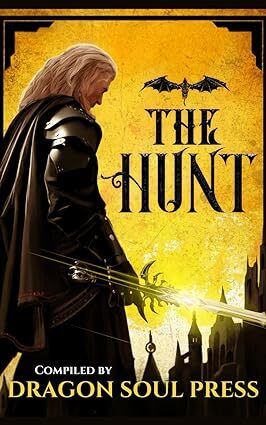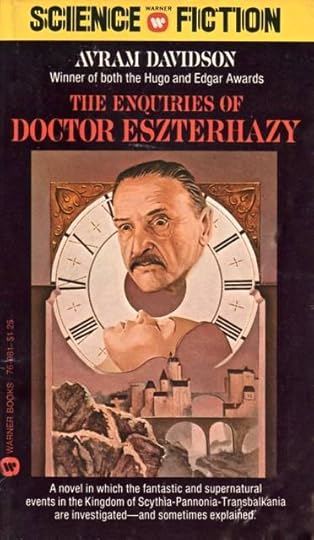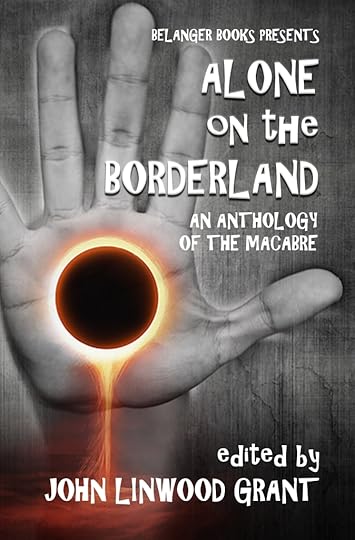Tim Newton Anderson's Blog, page 3
August 2, 2024
Boris the Writer

My tribute to Boris Vian has now appeared as part of an ultra limited edition publication by https://raphuspress.weebly.com/.
There’s No Way To Escape (https://raphuspress.weebly.com/theres-no-way-to-escape.html) is the latest publication by the wonderful Al Dinez od Raphus Press (https://www.facebook.com/RaphusPress) has writing by Damian Murphy, Rhys Hughes, Maxim Jakubowski, and Jonathan Wood as well as myself.
I deliberately didn’t attempt to emulate Vian’s style – who could – but included some of his passions such as Jazz and the post war St Germain culture including his friendship with the person I named Jean Paul Georges (Ringo to his friends).
I have also recently finished reading Wakefield Press’ latest Via translation Trouble in the Swaths. This surreal romp is Vian’s first novel, although it was not published until 1966 – seven years after his death. It was written for the amusement of family and friends during the occupation of Paris but has all of the typical Vian humour and inventiveness. Terry Bradford has done a splendid job on the translation of an untranslateable author.
July 21, 2024
Illuminating the Obscure

There are a couple of new publications I have pieces in – the most significant being Triple Obscura 2 from @Rhys Hughes Gibbon Moon Books.
Rhys – who I admire for his own work as well as his publishing – was kind enough to choose me for the second of volume of this great series. I have six stories – 20,000 words in total – in this publication.
The stories I chose were some of the more unusual and experimental of my output and include two about the imaginary version of the London Institute of ‘Pataphysics and two featuring my version of Alfred Jarry. In one he is a psychic detective and in the other he gets a visit from a man who has used Jarry’s story to build a time machine to prevent the holocaust.
Another story also takes an oblique look at the same event as a book finder looks for fragments of an impossible book.
The final tale is based on my time as a journalist at the Shields Gazette and is my homage to the wonderful Wodehouse.
If you are kind enough to buy a copy and like the stories, a review on Amazon would be wonderful. The other publication I’m featured in is Eternal Haunted Summer ezine in their Gardens issue. Inspired partly by the early stories of Avram Davidson it is set in my imaginary eerie Fenland village of Great Marshway.
July 18, 2024
The Map is not the Territory

The Map is not the territory
I had a couple of Amazon vouchers so bought myself Adam Dant’s wonderful Maps of London and Beyond (Batsford).
I have been a fan of Adam’s work since reading his Donald Parsnip columns reprinted by the London Institute of ‘Pataphysics, of which we are both members (I was honoured to participate in his work for the Bureau of Subliminal Images).
As I may have mentioned I am a fan of unusual maps – especially of places that don’t exist. Adam’s work covers not only places that do exist, but their history and the people who lived there. There are several in the book of Spitalfields, where he lives and works, and wider East London. The follower of psychogeography would find a rich trove of inspiration in his depiction of the treasures of the capital’s past and present, as well as the visual beauty of his work.
This book, or any of Adam’s other publications, is a beautiful addition to any library.
The Sheeple Look Up
I wonder whether as well as adding new words in the Oxford Dictionary each year, they should note which ones have vanished?
Language, as we know, evolves. Especially one as eclectic as English with its roots in every country that has invaded us, or we have invaded. Plus its spread as the second language for even more countries than it is the first language for.
In the age of the internet and social media, new words are birthed, spread, and die in the lifetime of a mayfly. One of these is ‘sheeple’.
As far as I can tell its origin was during the pandemic where conspiracy theorists, anti vaxxers and libertarian provocateurs used it to insult those who had the poor judgement to rely on science, logic, and observable facts to steer their lives and opinions.
As Colin Dickey’s Under the Eye of Power tells us, conspiracy theories and the othering of groups is nothing new. Similarly the use of language to brand those who accept conventional wisdom – I’m old enough to remember the counterculture use of “square” for anyone they believed had sold out.
Now, I’m not suggesting that (a) everything those in authority tell us should be swallowed without looking at it very closely or (b) conventional science has the monopoly on wisdom and knowledge. Those in power have a vested interest in people accepting their narrative and will push fake news as much as conspiracy theorists. As Kuhn’s examination of how new discoveries are made shows us, science will continue to push its existing narrative until contrary evidence pushes it over a cliff.
What I am saying is that one should critically examine everything to the best of your time, skill and will. The truth or reasonableness of something does not depend on who says it, and agreeing with accepted wisdom (or not) doesn’t say anything about you as a person.
When I used to be a journalist I sometimes (not enough) challenged the accepted view that any position had to be challenged by the opposite view in a story. This is bollocks. Firstly, there will be a continuum of views and not simply binary opposition and secondly some things are self evidently true. You don’t have to bracket anything about space with the views of a flat Earther who believes the moon missions were faked.
I wonder whether we don’t see as much use of the word “sheeple” because what was once alternative is becoming mainstream. Perhaps we should start calling them “sheeple” as they move into the majority.
July 1, 2024
Capital Books
I’ve just finished reading a couple of books about the history of London – one of my favourite topics.
I found Rebel Footprints by David Rosenberg (Pluto Press) at the wonderful #barnabeesbooks, where several of the other volumes I will mention also came from. Rosenberg’s book is a series of walks around key areas where insurrection developed the rights all of us in the UK take for granted. It also celebrates a history which was only obliquely taught when I was in school. We touched on the Suffragettes but not on the working class offshoot in the East End, and mentioned the Chartists but not in any depth. We also missed out on any discussion of the key developments in the early trade union movement and London’s early socialist boroughs.
The other book – London’s Strangest Tales by Tom Quinn (Portico) does have tales of kings and aristocrats who make up most of the eccentricities detailed. This is possibly because (a) they can afford to indulge their eccentricities and (b) ordinary people who behaved the same way would be locked up in the nearest asylum. A book which celebrates more of the ordinary citizens of the city is Christopher Fowler’s Bryant and May’s Peculiar London (Penguin) as his eccentric detectives tour the sites fetured in Fowler’s amazing series of detective novels where the city is as much a character as the people. The Infinite City by Niall Kishtainy (Collins) also celebrates the city’s visionaries who pioneered different ways of living.
London’s contrasts are one of the things that makes it endlessly fascinating. Throughout its history extreme wealth and poverty have existed side by side and successive waves of immigrants fleeing persecution and poverty have enriched its economic and cultural life. Iain Sinclair edited London City of Disappearances (Penguin) which is a mixture of factual and fictional writing celebrating some of richness of its past and present. As Chesterton reinforced in his fantasy The Napoleon of Notting Hill London is a collection of discrete villages rather than a cohesive whole. Sinclair is the master of exploring some of those enclaves in his eccentric journeys across the city in books like London Overground.
Sinclair is, of course, keen on psychogeography and Peter Ackroyd explores that topic in some of his fiction set in the city. However his London The Biographyis, in my view, the greatest single volume history of the capital, and London Under (Vintage) is a great companion to what lies beneath the streets. If that topic interest you I can also recommend London Under London by Trench and Hillman (John Murray) and Subterranean Cities by David Pike (Cornell) which looks at both London and Paris.
The other general guide I would recommend is Curiocity by Eliot and Lloyd-Rose (Penguin) which maps by topic rather than just locality. If you are interested in the occult side of London (and it has been a setting for some great urban fantasy novels) start with The New Jerusalem by Adrian Gilbert (Corgi) which speculates on the link between esoteric ideas and the rebuilding of the City after the Great Fire and there is also Occult London by Merlin Coverley (Oldcastle Books) an the Herb Lester map of Occult London.
Other books in my library are London Lore – Steve Roud (Arrow Books); Secret London an Unusual Guide (Jonglez); The Little Book of London by David Long (Sutton Publishing); The London Compendium Edited Glinert (Penguin) ;London A Social History by Roy Porter (Hamish Hamilton) and for those of you who want to do the Monopoly tour Do Not Pass Go by Tim Moore (Vintage).

June 17, 2024
And some more acceptances…

June is proving a good month for writing so far. Two more stories have been published in anthologies and I have had another accepted.
The Hunt by Dragon Soul Press includes my The Real Housewives of Transylvania. As is often the case, the title came first and I then speculated on what story could justify it. The result is an epistolatory tale (modelling the original Frankenstein and Dracula) which tries to redress the inherent sexism in most horror stories and films – women are generally there to be victims or love interest(or both). In my story the Bride of Frankenstein survives and follows her intended mate’s trail of destruction around the world, encountering other women from horror tales.
The Wanderer from the Scars TV stable includes my Cave Canem. There was a call for an anthology of updated myths and I wrote this tale of a black serviceman on his way home after a stint in Vietnam encountering a hippy cult, its leader and a charismatic musician searching for his lost love in 60s Crete. It didn’t get accepted for the anthology but Scars were happy to bring it to print.
The story I have had accepted is Immoral Panic, set in the same imaginary Fens village as The Witch Bottle from Borne in the Blood. It will be in the next Eternal Haunted Summer, and was partly inspired by the wonderful Avram Davidson’s early short stories.
June 3, 2024
Synchronicity

The second of my podcast guest appearances about Avram Davidson went live last weekend – at the same time as a post appeared on Facebook about the very same story.
My appearance on Seth Davis’ Avram Davidson Universe site is live: Season 4, Episode 10 . We discuss a story from my favourite sequence by Avram – the Dr Eszterhazy stories. The particular story is Milord Sir Smiht, the English Wizard.
In Avram’s stories no detail, however obscure or seemingly irrelevant, is unecessary to the story. With his numerous degrees Eszterhazy understands that everything is connected, so one wonders if it was coincidence or synchronicity that Crossovers Expanded author Sean Lee Levin republished a Facebook memory from 8 years ago about that very story on the day the podcast went live. Sean included the story in his original two volumes of Crossovers Expanded to prove Eszterhazy existed in the crossovers universe (the third volume goes on sale soon from Meteor House – see https://meteorhousepress.com/category/forthcoming-titles/).
I had mentioned in the podcast the obvious fictional crossovers – Ruritania and Graustark being neighbours of Scythia – Pannonia- Transbalkania – and the mention of a student changing into a giant cockroach – but missed the Sherlock Holmes link Sean spotted. Which is another synchronicity as the latest volume of the MX Book ofNew Sherlock Holmes Stories – Part XLV – with a story by me, arrived in the post.
The story – Death at the Diogenes Club – is a sort of sequel to an earlier entry by me in the series – The Unlikely Assassin. David Marcum, who does an amaxing job editing the series, has placed a time scale of 1898 to 1917 on the storiesin this volume. This is around the same time as the Eszterhazy story is set. The link Sean missed is to Edward Bulwer Lytton’s Zanoni which features the aetheric life force of Vril mentioned by Smiht as the basis for his scientific experiments.
April 25, 2024
Edwardian Horror at its best
The kickstarter for a new collection of Edwardian horror I have a story in is now live at https://www.kickstarter.com/projects/belangerbooks/alone-on-the-borderland?ref=profile_created.
John Linwood Grant has edited Alone on the Borderland which is inspired by the amazing horror stories of the Edwardian age – particularly William Hope Hodgson. The book is forthcoming from the great anthologists Belanger Books in the summer, but you can get some wonderful benefits if you support the kickstarter. Belanger and John (and his colleague Dave Brzeski) are producing some amazing anthologies of the period. I hope to be in one of Dave’s later this year.
Please check out the kickstarter and I will let everyone know when the book will be released.

April 15, 2024
Never Mind the Balkans – it’s Scythia-Panonnia-Transbalkania
My favourite Avram Davidson book has just been reprinted – The Adventures of Dr Eszterhazy The stories take place in Europe’s fourth largest empire – Scythia-Pannonia-Transbalkania which most people will not remember as it is just one of many places in the Balkans that has disappeared from the map but we can still find in books.
This is, of course, not so much an adventure in unhistory (another of Avram’s great books) but an exercise in ungeography. However Avram’s invented empire has its feet in the very real history of the Balkans (itself a name with a fairly recent history as it was only coined in 1808 by August Zeune based on a misconception that the Balkan Mountains were the dominant range in that area).
The time of the Eszterhazy adventures is not specifically stated although there is a mention in Duke Pasquale’s Ring of the inclusion of the Kingdom of the Two Sicilies being included in the new nation of Italy which took place in 1861. The stories are definitely set in the run up to the (many) nationalist revolts at the end of the 19th century.
The Balkans (let us call them that for simplicity) were nestled between three real Empires (the Ottoman, Russian and Austro-Hungarian) and have been controlled by some or all of them at one time or another, as well as the Greeks, Persians and Romans. It is in many ways the cradle of civilisation in Europe as it was the first place to embrace agriculture. This spread to Europe what became the Roman province of Panonnia – now part of Hungary. The Scythians controlled part of the Eastern Balkans having spread from what is now Iran to conquer a large area and defeat other tribes including the Cimmerians (no mention of Conan in their history though). As for Transbalkania, there is no historic basis for this, but the region does, of course, include the very real country of Transylvania. The Balkans were home to the first advanced civilisation – the Vincas, whose writing dates back to 5000 BC.
Avram’s empire covers parts of what are now Bosnia-Herzogovina, Montenegro, Kosovo, Romania, and the Balkan Sea, which does not seem to exist in his world. It is bordered, amongst other places, by Ruritania,Graustark and Illyria – which moved in and out of existence in our world from its origins in pre-Roman times to its final disappearance when it was re-organised into history by the Austro-Hungarian Empire in 1849.
Dr Eszterhazy has been compared to Sherlock Holmes in terms of his intellect (although there is no evidence Holmes completed either of the degrees he studied for and Englebert has more degrees than his name has syllables. While he is certainly an investigator he is not a detective, has no Watson (unless you count his Emperor Ignatz Louis) and is more concerned with scientific and political mysteries than crime. A closer comparison – hinted at strongly by the name of a neighbour – is to the genre of Ruritanian Romance.
The genre is named after the imaginary middle European kingdom in Anthony Hope’s The Prisoner of Zenda and its sequel. The popularity of the novel spurred a slew of imitators including George Barr McCutcheon’s set in Graustark. They ranged from pastiche and parody to Nabokov’s amazing Pale Fire, which references the imaginary country of Zembla. Given his encyclopaedic reading and research Davidson will have been familiar with these, and his games include literary ones as well as historical and mythical. Perhaps the closest thing to the Esterhazy stories in the genre is The Princess Bride if Goldman had left in Morgenstern’s political, historical and economic digressions.
His empire is a melting pot of cultures and religion, as was the real Balkans, with its status as a gateway between Europe and Asia, its mix of ethnicities and not only Muslim and Christian presences, but Eastern Orthodox as well as Catholic clergy. Like the real Balkans, there are nationalist independence movements carefully balanced by the savvy emperor with Eszterhazy’s aid, along with plots by its neighbours to snatch up parts of its territory. All the while it balances its largely agricultural and trading traditions with the growth of industrialisation and new technology and in the background there are always hints of magic. Holmes was always a modern man, but Eszterhazy and the land he inhabits straddle history and modernity. Everyone has more archaic and arcane titles than you can shake a sceptre at and each province and personality has a thoroughly thought out history and culture. `
In his afterword to the Adventures, Davidson says his initial thought was to write a sequel to the Cabinet of Dr Caligari and instead wrote something whose title had the same rhythm. Inspiration came along with the setting and each story sprang up with real life stories of vanished countries and exiled aristocrats of those lost kingdoms. I believe an equal part of the inspiration was the melting pot of ethnicities amongst the immigrant populations of New York as he was growing up.
Scythia-Panonnia-Transbalkania is not the only empire to vanish without a trace in our recent past. Austro-Hungary broke up after the first world war, and the Ottoman Empire was not far behind. Russia maintained its existence as a country after the 1917 revolution but parts of Eastern Europe have been in and out of its control ever since like a version of nation hokey-cokey. And the British Empire broke up during my own lifetime as nations attained their legitimate desire for self government, as did those of France, Germany, and other imperialist nations of Europe. The Balkans have remained a flashpoint from the gun that fired the starting signal for the First World War to the civil war in the former Yugoslavia. Thankfully we can still revisit the complexity and richness of Eszterhazy’s world every time we open the cover of the Adventures.
April 13, 2024
Another Publication
My story The Imaginary Brother has just been published in the book anthology from Scars publications: The Limits of Language (http://scars.tv/2024January-April-issue-collection-book/The_Limits_of_Language.htm) available on Amazon (https://www.amazon.co.uk/Limits-Language-2024-Down-Dirt/dp/B0CXMV6SH5/ref=sr_1_1?crid=Q5TEL6OJBTRX&dib=eyJ2IjoiMSJ9.oYeFew-jTcplfJ1ahCSUeA.TtxLhmwfLqXwNIWMZ6eJGljMRdlBcLLn_DQKib4YqHo&dib_tag=se&keywords=the+limits+of+language+scars&qid=1713005379&sprefix=the+limits+of+language+scars%2Caps%2C109&sr=8-1)




